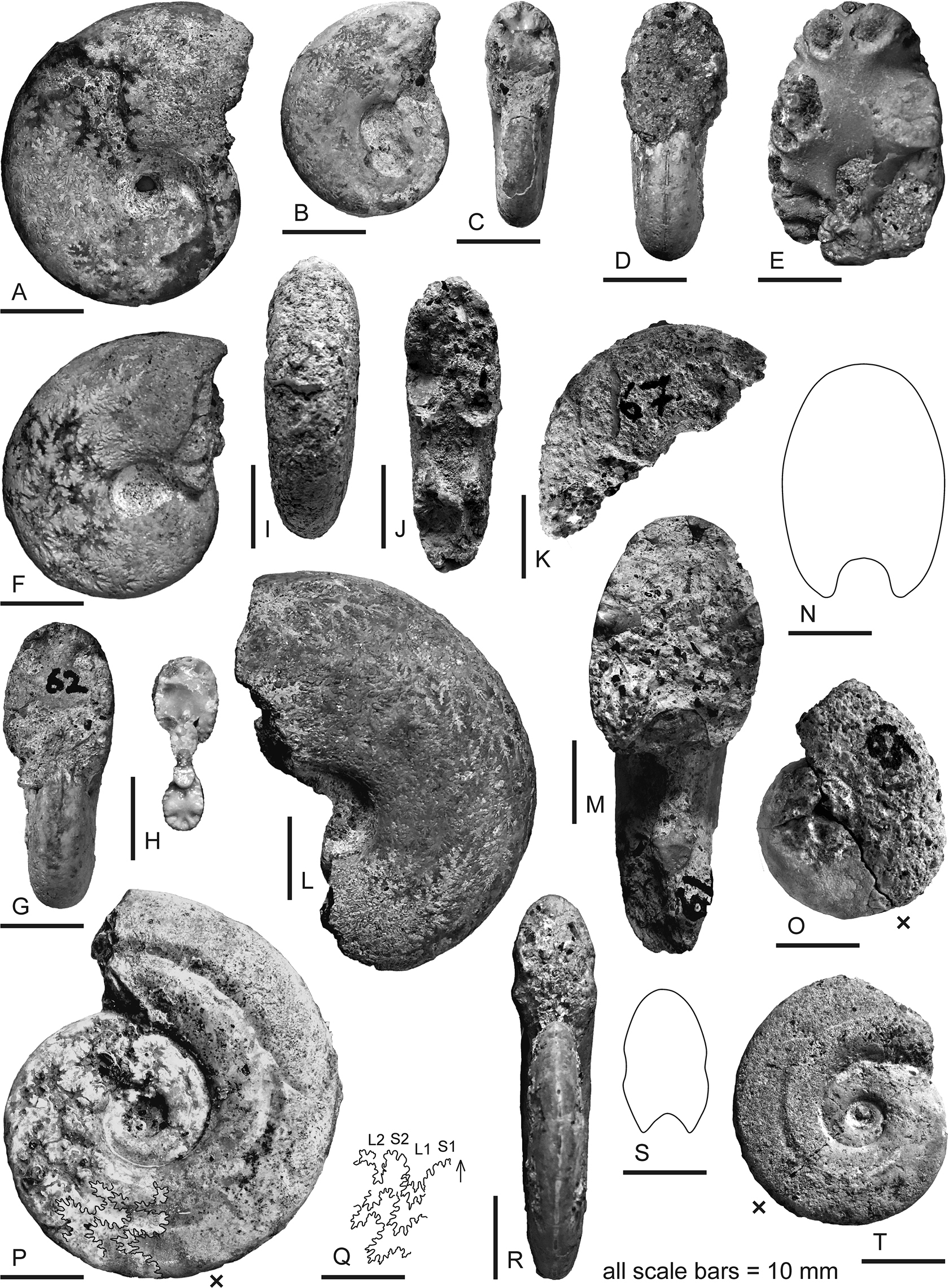
|
||
|
A–G, L–N. Haploceras staszycii (Zeuschner, 1846). A. KSKV2019Jara/63, left side view of phragmocone, note well preserved suture lines; B, C. KSKV2019Jara/64; B. Left side view of phragmocone; C. Apertural view showing broken aperture along a septum; D. KSKV2019Jara/66, apertural view; E. KSKV2019Jara/69, apertural view showing broken surface along a septum; F, G. KSKV2019Jara/62; F. Left side view of phragmocone, note well preserved suture lines; G. Apertural view; L–N. KSKV2019Jara/61; L. Right side view of phragmocone; M. Apertural view; N. Outline of whorl-section; H–K, O. Haploceras sp.; H, O. KSKV2019Jara/65; H. Apertural view along a broken surface of phragmocone; O. Right side view showing phragmocone and a part of body chamber; I–K. KSKV2019Jara/67; I. Vental view; J. Apertural view; K. Left side view of body chamber; P–T. Hildoglochiceras kobelliforme (Bonarelli, 1894) (m); P–S. KSKV2019Jara/1, inner cast with epigenized shell preserved; P. Right side view of moderately evolute specimen (U ≈ H), with subtle uncoiled outer whorl (probable adult), body chamber 180° with peristomal vestige (dorsal branch on inner cast?); Q. Suture lines at the end of phragmocone, note increased density at the end of phragmocone; R. Apertural view, note epigenized shell clearly identifiable on the ventral region; S. Oval whorl section with narrow venter, wide lateral groove on the body chamber; T. KSKV2019Jara/2. inner cast, left-side view of nearly complete adult specimen with clear final uncoiling, partial preservation of epigenized shell, ca. 180° of preserved body chamber on inner cast of comparatively fine-to-medium sandstone. |